Paul Nash (British, 1889-1946) Leaving the Trenches signed 'Nash' (lower right) pencil, watercolour, pastel, pen and ink 20.5 x 24.7 cm. (8 x 9 3/4 in.) Executed in 1917 Fußnoten Provenance Collection of C. Butler Alan Proctor, thence by descent to the present owner Private Collection, U.K. Exhibited London, Goupil Gallery, Drawings made in the Ypres Salient by Paul Nash June 1917, cat.no.20 (as Study) Literature Anthony Bertram, Paul Nash The Portrait of an Artist, Faber and Faber, London, 1955, p.99 Margot Eates, Paul Nash John Murray London, 1973, p.96, pl.13b Andrew Causey, Paul Nash Clarendon Press, Oxford, 1980, p.359, cat.no.144 Leaving the Trenches was formerly in the collection of Alan Proctor (20 February 1920–16 April 2009) and has been consigned from his family. Alan left school in 1935 to work as an engineer before joining the army and serving in the 30th Royal Signals between 1943-1949. Following this he enjoyed a long and successful career at Jaguar cars, rising to the position of Industrial Relation Manager by the time of his retirement in 1983. During his career Alan found time for numerous other interests and owned a post office, wool shop and number of health shops whilst at the same time indulging his passion for the arts by leading a dance band whose orchestra played around the world. Alan was a keen collector and amassed an impressive and diverse art collection, which was largely formed following a visit to Cornwall in the 1960s and from which we are delighted to be offering the present work. Following the outbreak of War in 1914, Paul Nash was subjected to the dull routine of home defence prior to his officer training at Denham and then Camberley in 1916. By December of that year he was enlisted to the Hampshire Regiment and finally dispatched to France, arriving at the Ypres Salient in March 1917. By the end of May, he would be back in England after having fallen heavily one very dark night whilst stepping above the trench line to watch the bombardment of enemy positions and suffering a badly broken rib. His misfortune that evening was of course to the benefit of British art as, along with C.R.W. Nevinson, he was to become the most important artist to depict the Great War and would not suffer the same fate bestowed on his regiment shortly after. Three days following his removal, the majority of his fellow officers perished in the disastrous battle for Hill 60, the vagaries of chance having turned in his favour as they had not done for others such as the tragic Henri Gaudier-Brzeska mortally wounded in the trenches at Neuville-St-Vaast two years earlier. By the time of his accident, Nash had completed twenty drawings of life at the front. These works, including Leaving the Trenches, represent the earliest examples of the conflict and were sent home in May 1917 to be exhibited at The Goupil Gallery to much critical acclaim. The actuality and immediacy of these works created much of a stir in London as they brought a visual representation of war to the public who had only previously read or heard about it. They are reflective of his intense experiences over a brief time and paved the way for his appointment by John Buchan in the Ministry of Information as an Official War Artist. The scarcity of these works, several of which now reside in public collections, makes their emergence at auction a rare occasion and they portray an image of military action that is more sedate and removed from the torturous experiences witnessed and transcribed by Nash upon return to Europe and culminating with the Battle of Passchendaele. Leaving the Trenches depicts a group of heavily accoutred soldiers doggedly moving forward in steel hats over the clean duckboards of the winding trench. Nash had arrived at the Ypres Salient during a relatively quiet time and the only works that record active fighting during this spell are Raid, Preliminary Bombardment and The Very Light. The soldiers here appear to be well ordered, space
Paul Nash (British, 1889-1946) Leaving the Trenches signed 'Nash' (lower right) pencil, watercolour, pastel, pen and ink 20.5 x 24.7 cm. (8 x 9 3/4 in.) Executed in 1917 Fußnoten Provenance Collection of C. Butler Alan Proctor, thence by descent to the present owner Private Collection, U.K. Exhibited London, Goupil Gallery, Drawings made in the Ypres Salient by Paul Nash June 1917, cat.no.20 (as Study) Literature Anthony Bertram, Paul Nash The Portrait of an Artist, Faber and Faber, London, 1955, p.99 Margot Eates, Paul Nash John Murray London, 1973, p.96, pl.13b Andrew Causey, Paul Nash Clarendon Press, Oxford, 1980, p.359, cat.no.144 Leaving the Trenches was formerly in the collection of Alan Proctor (20 February 1920–16 April 2009) and has been consigned from his family. Alan left school in 1935 to work as an engineer before joining the army and serving in the 30th Royal Signals between 1943-1949. Following this he enjoyed a long and successful career at Jaguar cars, rising to the position of Industrial Relation Manager by the time of his retirement in 1983. During his career Alan found time for numerous other interests and owned a post office, wool shop and number of health shops whilst at the same time indulging his passion for the arts by leading a dance band whose orchestra played around the world. Alan was a keen collector and amassed an impressive and diverse art collection, which was largely formed following a visit to Cornwall in the 1960s and from which we are delighted to be offering the present work. Following the outbreak of War in 1914, Paul Nash was subjected to the dull routine of home defence prior to his officer training at Denham and then Camberley in 1916. By December of that year he was enlisted to the Hampshire Regiment and finally dispatched to France, arriving at the Ypres Salient in March 1917. By the end of May, he would be back in England after having fallen heavily one very dark night whilst stepping above the trench line to watch the bombardment of enemy positions and suffering a badly broken rib. His misfortune that evening was of course to the benefit of British art as, along with C.R.W. Nevinson, he was to become the most important artist to depict the Great War and would not suffer the same fate bestowed on his regiment shortly after. Three days following his removal, the majority of his fellow officers perished in the disastrous battle for Hill 60, the vagaries of chance having turned in his favour as they had not done for others such as the tragic Henri Gaudier-Brzeska mortally wounded in the trenches at Neuville-St-Vaast two years earlier. By the time of his accident, Nash had completed twenty drawings of life at the front. These works, including Leaving the Trenches, represent the earliest examples of the conflict and were sent home in May 1917 to be exhibited at The Goupil Gallery to much critical acclaim. The actuality and immediacy of these works created much of a stir in London as they brought a visual representation of war to the public who had only previously read or heard about it. They are reflective of his intense experiences over a brief time and paved the way for his appointment by John Buchan in the Ministry of Information as an Official War Artist. The scarcity of these works, several of which now reside in public collections, makes their emergence at auction a rare occasion and they portray an image of military action that is more sedate and removed from the torturous experiences witnessed and transcribed by Nash upon return to Europe and culminating with the Battle of Passchendaele. Leaving the Trenches depicts a group of heavily accoutred soldiers doggedly moving forward in steel hats over the clean duckboards of the winding trench. Nash had arrived at the Ypres Salient during a relatively quiet time and the only works that record active fighting during this spell are Raid, Preliminary Bombardment and The Very Light. The soldiers here appear to be well ordered, space
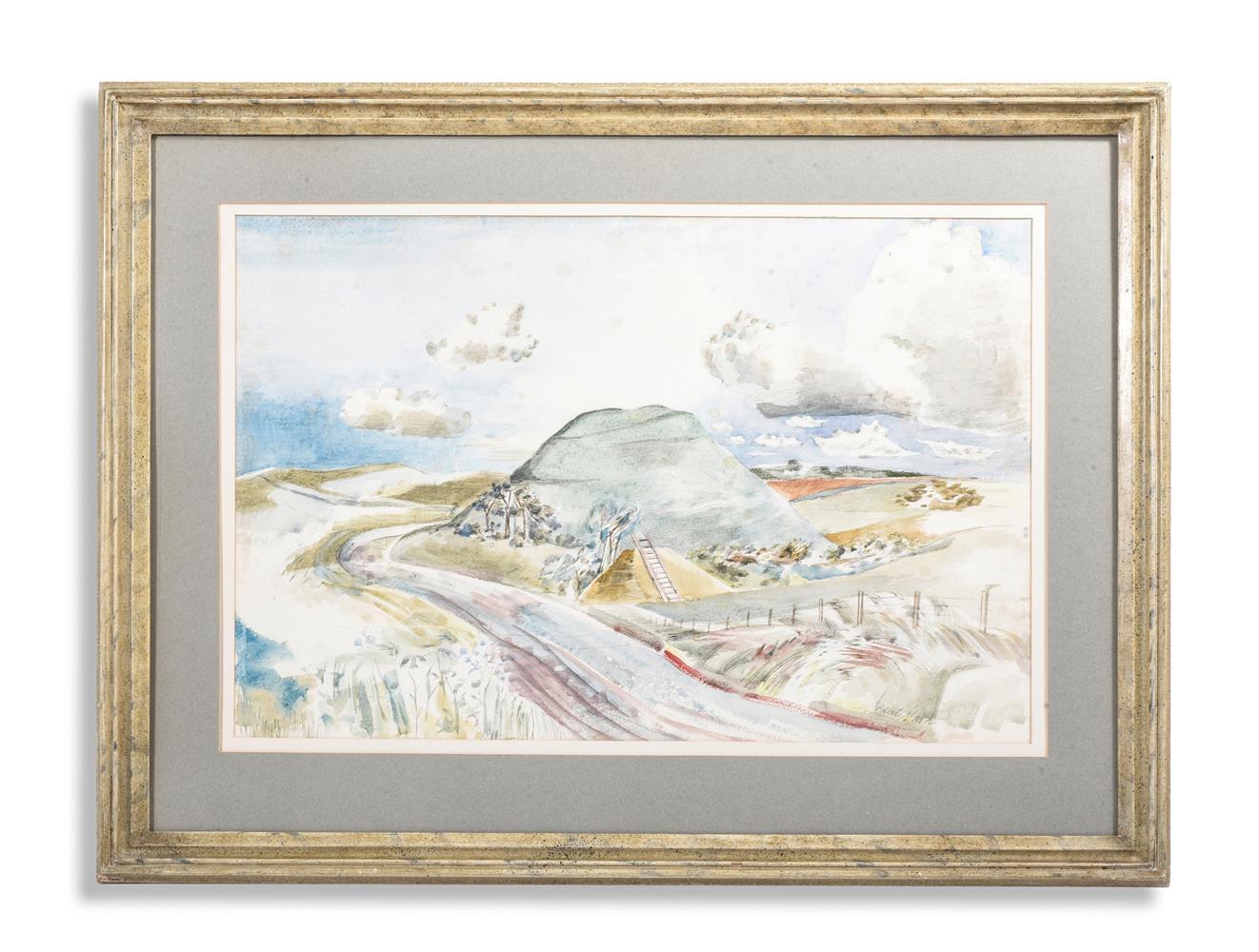


.jpg)

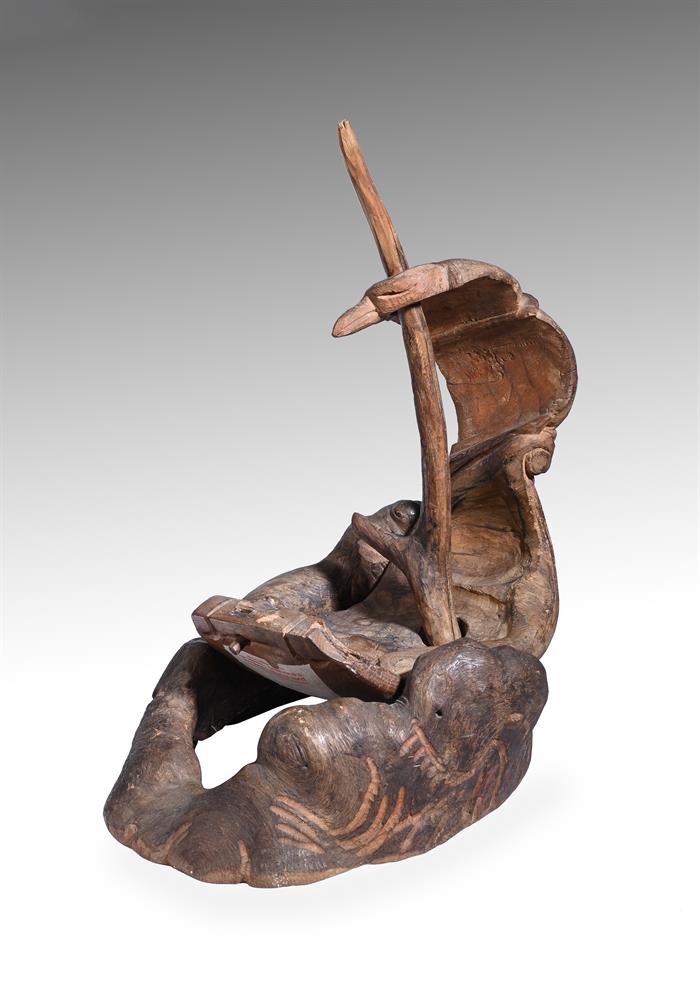




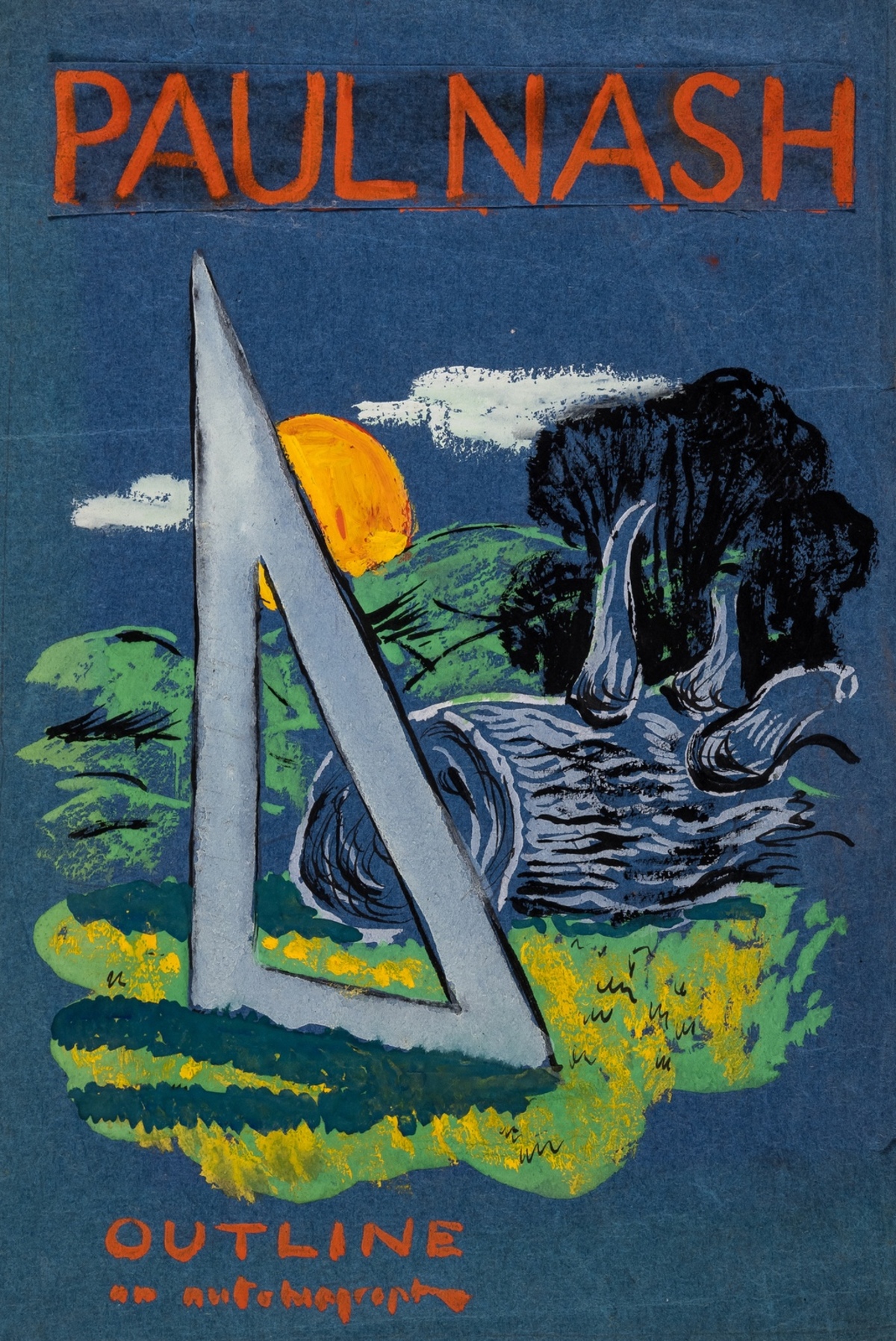


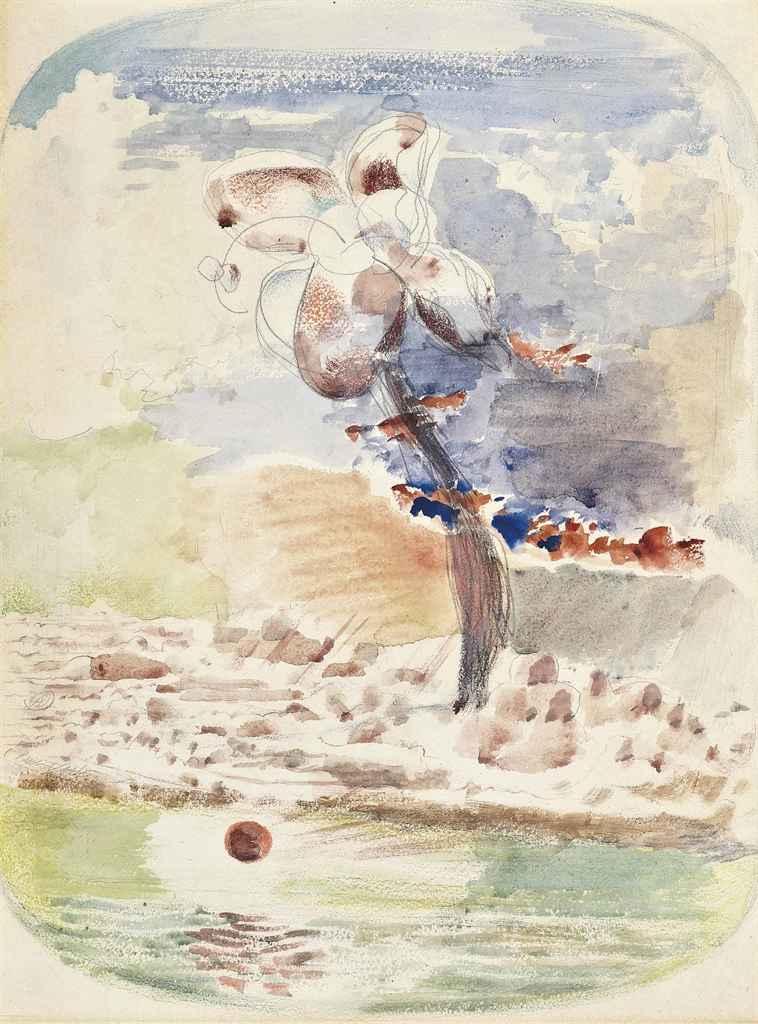
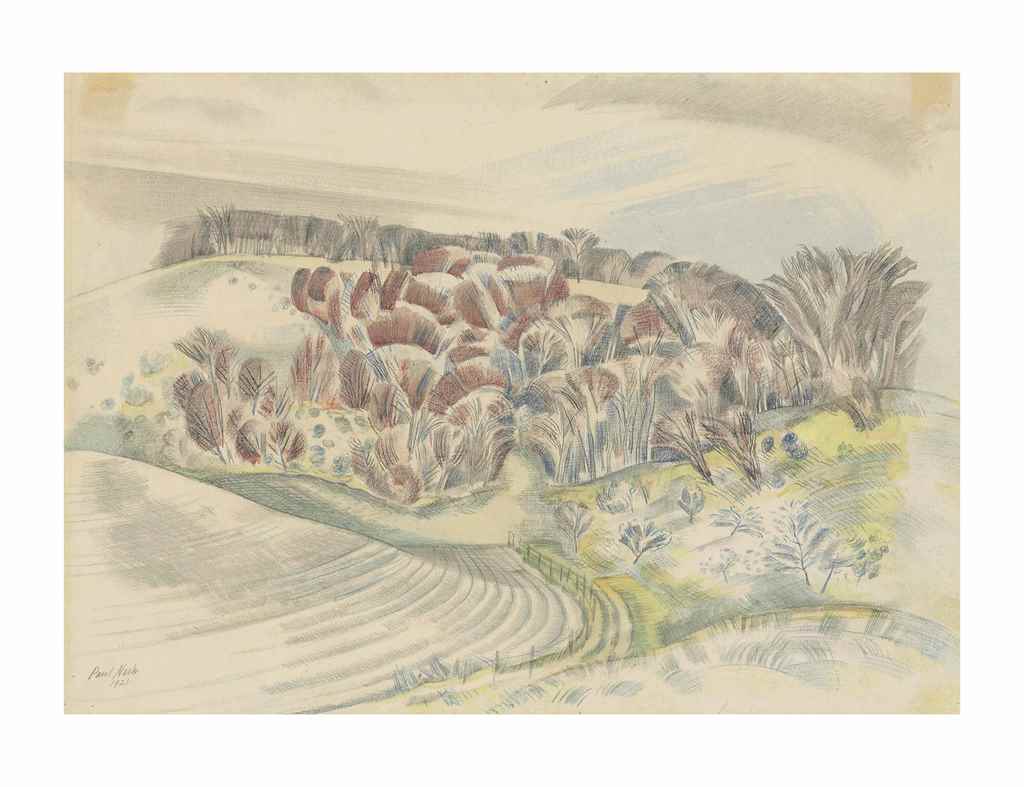
Testen Sie LotSearch und seine Premium-Features 7 Tage - ohne Kosten!
Lassen Sie sich automatisch über neue Objekte in kommenden Auktionen benachrichtigen.
Suchauftrag anlegen